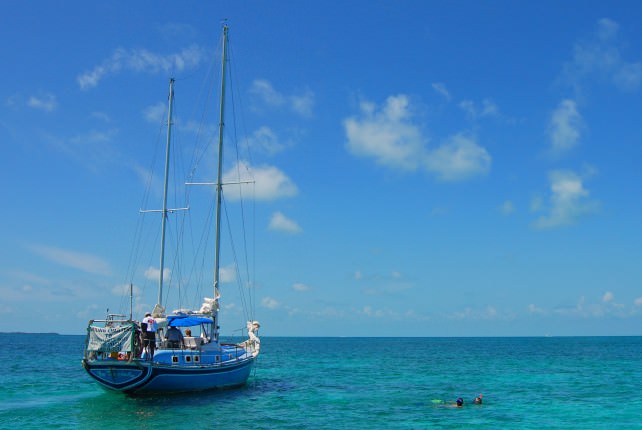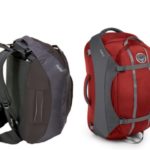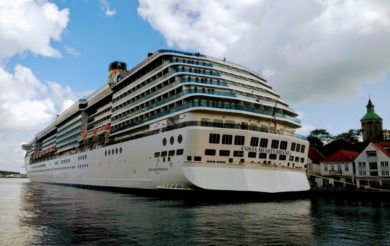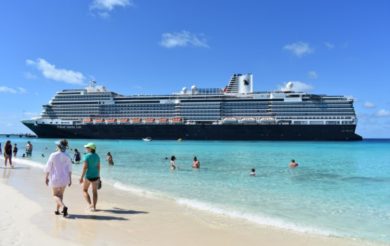Part 3: Travel Tips: Outdoor Safety Items
Part 3: Travel Tips: Outdoor Safety Items
By Jeannette and Dan Dudek
Anyone who spends time outdoors should know the basics for staying safe; and how to help others in distress. This article lists these basic emergency situations; what you can do to avoid being a victim; and how best to respond to someone in need.
Frozen Lakes or Ponds
- Do NOT walk or skate on ice unless you take precautions:
- Ice needs to be at least four (4) inches thick to support a 200 pound person
- Be aware that ice may not be uniformly thick
- Do not go on ice with water on top, or if you observe cracks in the ice
- Wear a life preserver if you must venture out on the ice by yourself
- If you fall through the ice, use your arms to break away the thinner ice before you try to pull yourself out; and spread out your weight as you get on the ice
- If someone falls through the ice:
- Have someone go or call for help immediately
- Try to find a rope or a ladder to rescue the person
- Venture out on the ice only if you can safely do so
- Use your belt to reach out to the person
- Keep your weight distributed; lay down on the ice
- Have someone hold onto your feet, or secure you by a rope
Lightning
- Take shelter indoors if all possible, or inside a vehicle with the windows closed
- While indoors, do not use the telephone or stand by the windows
- If swimming, get out of the water immediately
- If outdoors, avoid water, high places, open fields and anything metal (thus under trees, picnic tables and shelters made with metal are NOT safe places)
Fishing
- Hypothermia can kill a person in as little as fifteen minutes if a person falls into water near freezing. Water in general dissipates the body’s heat very quickly. For this reason, it is important that if you are fishing alone, you need to be wearing a life preserver, or better yet, use a life preserver and tie a safely line attached to your boat and to your ankle.
Part 3: Travel Tips: Outdoor Safety Items
Swimming
- Use the buddy system; everyone in the water watches after someone, and that person in turn watches his/her partner
- Do not rely on life preservers, tubes or other flotation devices; if you cannot swim, stay in shallow water (losing a flotation device in deep water when you cannot swim is a cause of death each year for a number of people)
- Do not dive from a pier/boat if you are not ABSOLUTELY sure of the depth of the water
- At the ocean, be particularly careful about swimming when there are rip currents, jelly fish, man-of-wars and other potential hazards (know the poisonous creatures in the area; if not sure, look but do not touch!)
- If you are caught in a rip-tide and pulled away from shore – swim parallel to the shore to get out of the rip-tide before attempting to swim to shore (be particularly careful not to swim parallel to the waves as they usually approach the shore at an angle; if you swim parallel to the waves, you may get out of the rip-tide only to find yourself tired, and a great distance from the shore!)
Rescuing a Swimmer
- Use extreme caution to avoid a “double drowning”
- Have someone go or call for help if possible
- Throw something floatable to the person if possible
- Throw a rope if available, tie something to the rope to throw it further
- If available, use a boat to go to the person in the water
- If you are a good swimmer, and must go into the water, use a shirt or other item to reach the person; try to avoid having to grab the person yourself – frequently in a panic, the person will try to climb on top of you and push you under water
- If the person does grab you and push you under, go deeper and push the person away; they will usually let go when you go deeper
- When you surface, explain to the person you can only help him/her if they stay calm and do not grab you; get them to turn their back to you, try to get them in a floating position on their back, and grab them under their chin to swim them to shore using a side-stroke
Boating
- Know the “rules of the road” before you attempt to drive a boat
- Remember “Red Right Returning”; if you see a boat with a Red Light it means it has the right-of-way and you must steer clear
- Understand that a sailboat when under sail has limited maneuvering options when tacking, i.e. sailing “close hauled” to the wind; when sailing “close hauled”, a sailboat will make a series of 90 degree turns. A sailboat cannot sail directly into the wind, nor within 45 degrees of the wind direction. For this reason, a sailboat under sail has the “right-of-way” over powered boats. A sailboat under sail at night will have its RED and GREEN bow lights on, but not its front white light.
- If you are sailing at night under sail, remember that if you put on your front White light, you are signaling you are under “power” and thus you are operating as a “power boat”.
- If sailing at night under sail, carry and use a flash light to light up your sails and make it easier for power boaters to see and avoid you
- In a canoe, kayak or inflatable boat, always wear a life preserver; the rule-of-thumb is that you should wear a wetsuit if the sum of the air temperature and the water temperature is less than 120 degrees.
Some items you should consider keeping on your boat at all times:
- Basic emergency tools, possibly an “all in one” type of tool
- Map of the body of water in which you are boating
- Compass
- Extra drinking water
- First Aid Kit
- Fire Extinguisher
- Whistle (three blasts should bring help)
- Life Preservers (one for each person, plus a throw life preserver)
- Sun Block
Some items you might want to consider carrying to your boat for each trip:
- Handheld GPS (add marker locations yourself if not programmed into your unit)
- Night Vision Scope (a First Generation scope is affordable and a great investment for anyone who intends to be on the water after dark)
- Binoculars (for seeing distant markers and other navigational items)
- Cell phone with the numbers of neighbors or friends with boats who you can call to “rescue” you if necessary (as well as the numbers of several marinas who can help you well)
Wave Runners
- Understand you are small and hard to see
- Drive your craft defensively; assume that the larger boat drivers cannot see you
- Be careful when making sharp turns to avoid other boats
- Always use an approved Life Preserver; fastened securely
- A Fire Extinguisher is usually mandatory; be sure you have it and it is fully charged
- Know and Obey the “rules of the road”
- Know and Observe the local ordinances for speed, pulling a skier, no-wake zones and restrictions when you must be off the water in relation to sun-up and sun-down
Sun Protection
Cases of skin cancer are on the rise. There are three basic types of skin cancer, all require medical attention, and melanoma can be fatal. Accumulative exposure to the sun increases the chance of skin cancer so you need to protect yourself and your family members (especially children) from the sun’s rays.
- Try to avoid being out in direct sunlight from noon to 2:00 p.m. during the summer; reduce your time in the sun from 11 a.m. to noon and from 2:00 to 4:00 p.m.
- Use a sun block with at least a Sun Protection Factor (SPF) of 15 for UVA protection
- Use a sun block that protects against both UVA and UVB Broad Spectrum rays; look for zinc oxide and titanium dioxide as ingredients
- Wear a hat and long sleeve shirt and pants
- Use hats and clothing designed for sun protection when going to be in direct sunlight
- Use sunglasses with UV protection; especially when on or near the water, sand, snow or any type of reflective surface
Read More in Jeannette and Dan Dudek’s Travel Tips Safety Series
- Part 1: Emergency Situations – Emergency Preparation for Staying or Evacuating
- Part 2: RVing and Camping Safety – Things You Should Know When Your Travels Involve Camping and Hiking
- Travel Safe and Smart
- RVing and Firearms ~ You carry a fire extinguisher to stop a fire;so consider a hand gun to stop an invasion
Bio:
Although 100 miles from the ocean, Jeannette and Dan Dudek were without electric at their home in North Carolina for fourteen days after Hurricane Hugo ripped thought South Carolina and North Carolina in 1989. Jeannette and Danhave traveled extensively domestically and internationally; and have been to most U.S. states and Canadian provinces and about 30 countries.
In his business career Dan has had the opportunity to spend weeks on assignment in many overseas locations, and has learned to observe the “frame of reference” others have of culture and political ideologies. He has a private pilot’s license (now inactive), and as an Eagle Scout, he practices the scout motto to “Be Prepared” for all situations and confesses to being a person who likes “electronic toys”, especially those security related.
Dan became involved with amateur photography started when he was about ten years old, and continues to this day. As a hobby, Dan makes DVDs of pictures and video for his family and friends. Jeannette’s career has included teaching elementary school classes; as well as English classes for middle school students; she also as has been a business manager and accountant for several firms. Jeannette’s passion is gourmet cooking and hosting special gatherings for friends and family.
Besides international travel, Jeannette and Dan enjoy traveling North America in their RV, as well as handgun competitions, sailing, hunting, hiking, mountain biking and other outdoor sports.





















